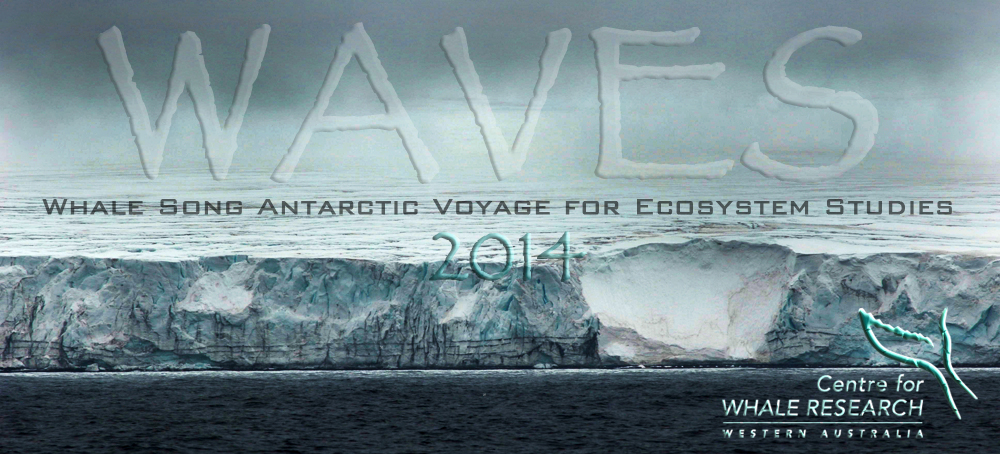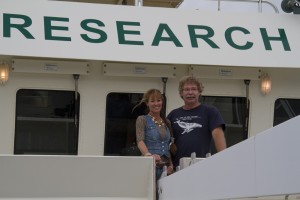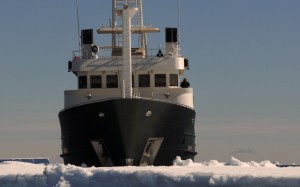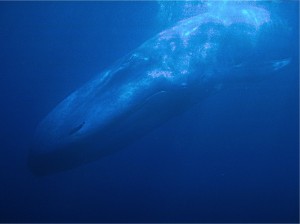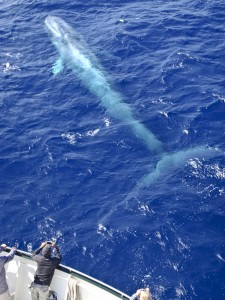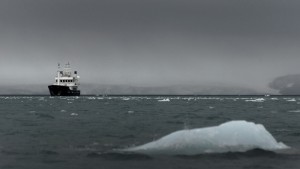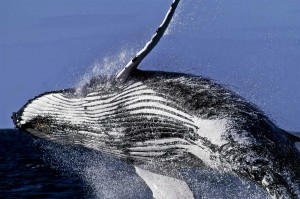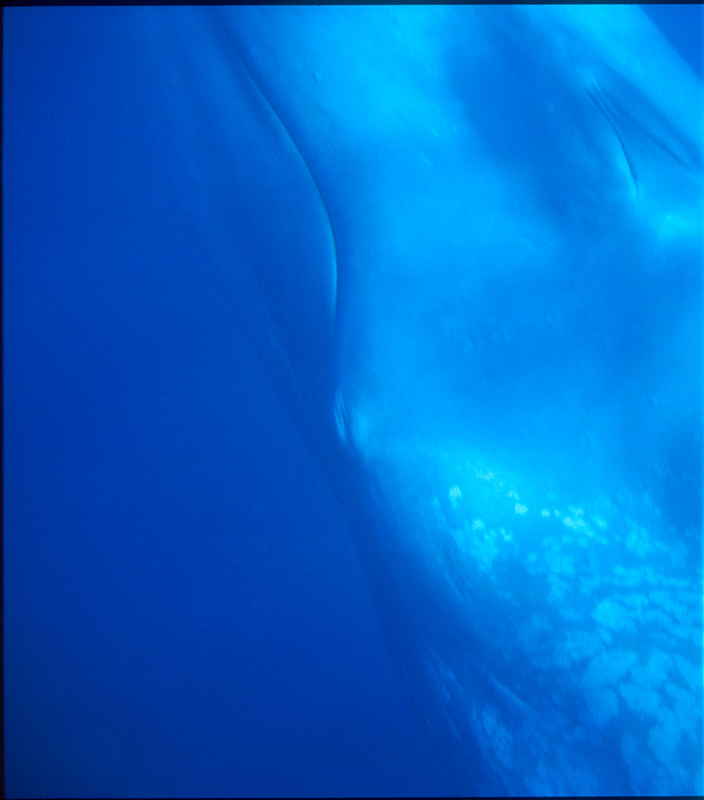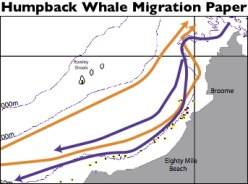Whale Song Antarctic Voyage for Ecosystem Studies (WAVES)
Where is Whale Song now?click here | Latest newsclick here |
|---|---|
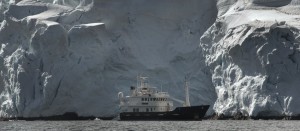 | 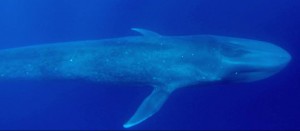 |
Or visit Location of RV Whale Song here
The Voyage
Curt and Micheline Jenner are Co-Principal Investigators at the Centre for Whale Research (Western Australia) Inc., and Explorers Club Members (FI’10). They are leading a new expedition to the Southern Ocean near the Antarctic ice shelf to monitor blue whales and their feeding habitat using a suite of scientific techniques on board their ice-class Research Vessel Whale Song during the summer of 2014. The Jenners and their team have studied humpback whales and blue whales in Western Australia for over two decades, working in the tropical breeding grounds of the humpback whales and the deep water feeding grounds of the blue whales off the southwest coast of WA.
As a result of their studies and collaborative efforts to date, a marine park for humpback whales (Camden Sound Marine Park) and a marine reserve for pygmy blue whales (Perth Canyon Commonwealth Marine Reserve) have been established. This voyage will be the first in a series of strategic Antarctic Voyages aiming to understand why the largest animal on the planet, the Antarctic blue whale, is not recovering from whaling pressures that ended decades ago. Other species, such as humpback whales, whose population energetics is also fueled by Antarctic krill, have shown steady population growth. So what can be holding the blue whale back? The answer may be fundamental to our own species’ survival on this planet.
Scientific Techniques
Cetacean feeding hotspots will be located using state of the art acoustic equipment capable of detecting whales from thousands of kilometers away. This unique system will allow the teams’ resources to be focussed on the areas that are most important to the whales – their core feeding grounds. Once these high density feeding areas are detected, blue whales and humpback whales will be tagged with low impact tracking and dive recording tags. These areas, where concentrations of whales are found, will also be examined with specialised echo-sounders and oceanographic instruments that will allow the scientists to measure the amount of krill, and krill-food (algae) that is sufficient to attract and sustain either blue whales or humpback whales.
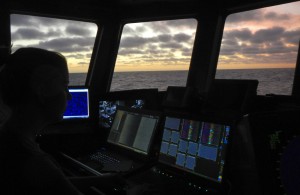
Acoustic detections using sonobuoys will assist in locating hotspots for blue whales.
Photo Credit M. Jenner
Dive profiles of the whales (indicative of feeding success) in each of the hotspots will then be compared to dive profiles generated as the tagged whales move throughout their Antarctic feeding grounds, allowing the two species of whales to tell us their own story about the abundance and proximity of other feeding hotspots. We may find, for example, that humpback whales are more effective predators than blue whales, and this simple technique of comparing dive patterns may reveal why humpback whales are recovering from whaling pressures so much faster than blue whales. This innovative and efficient strategy for locating feeding hotspots, and then examining feeding success, will be continued each year over 5 feeding seasons in Australian Antarctic waters.
The Questions
The fundamental question whale scientists want to answer is “Why aren’t blue whales recovering?” Despite decades of protection from whaling, and in the face of other species with shorter period of protection recovering faster, blue whale populations still remain at less than 10% of their original levels in the Southern Ocean. Have other species out-competed the biggest animal on the planet? Are krill resources too few and far between? Is the slow recovery more about the breeding grounds than the feeding ground? Where are these breeding grounds? There is no shortage of basic questions that lead to complex answers, but if we, as custodians of this planet, can’t work out what is going wrong with the largest animal on the planet, then perhaps we need to consider how we as a species are going to survive ourselves.
Timetable
The first WAVES expedition will depart Hobart in late December, 2013. Shortly after departure, acoustic pointers (sonobuoys) will be used to guide the week long voyage south to towards calling blue whales along the Antarctic ice shelf. The area with the highest blue whale call rate will be our target and the ship will stay with these whales for as long as possible within the 3 week study period, observing, measuring and tracking their feeding forays. Part of the voyage will be spent with humpback whales in a similar strategy before beginning the long journey north to Australia again, arriving in late January, 2014. For the latest reports on this exciting journey follow us on Facebook or Subscribe here to receive daily updates.
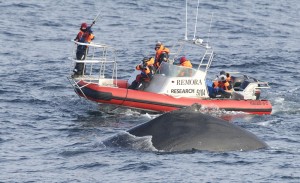
In 2010 Curt Jenner was part of the Australian Antarctic Division’s voyage to Antarctica.
Photo Credit Australian Antarctic Division.

